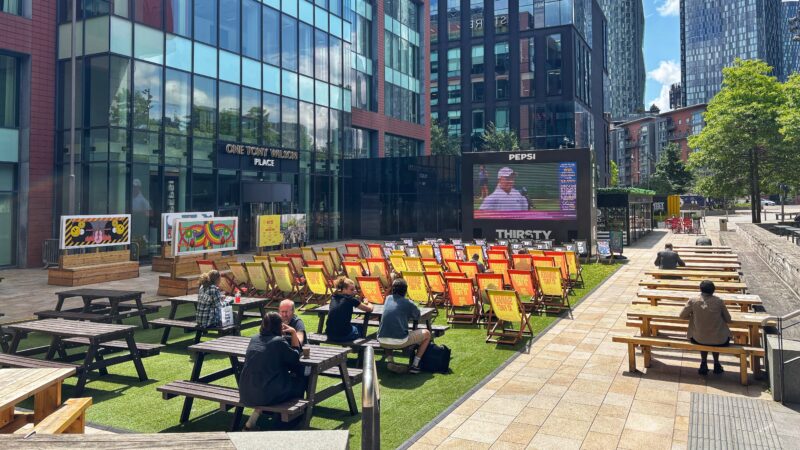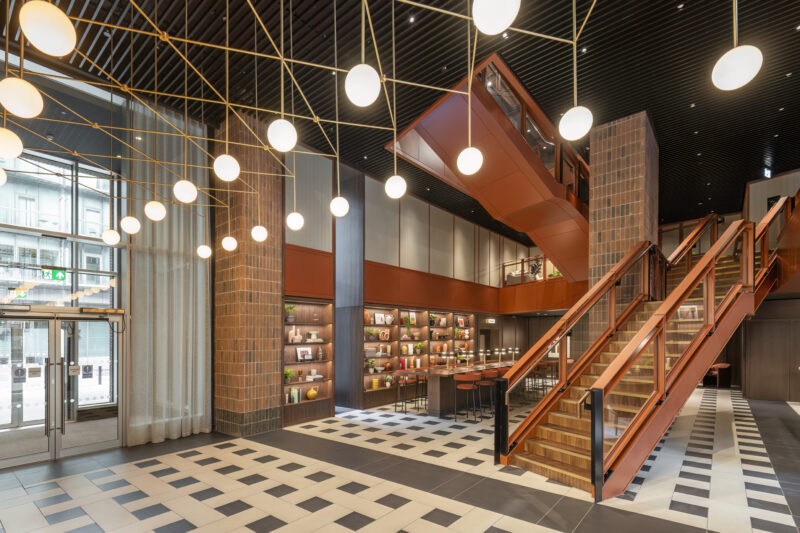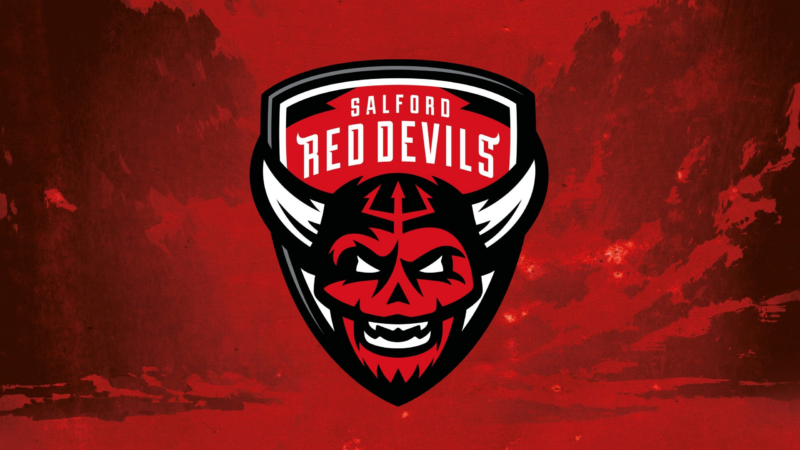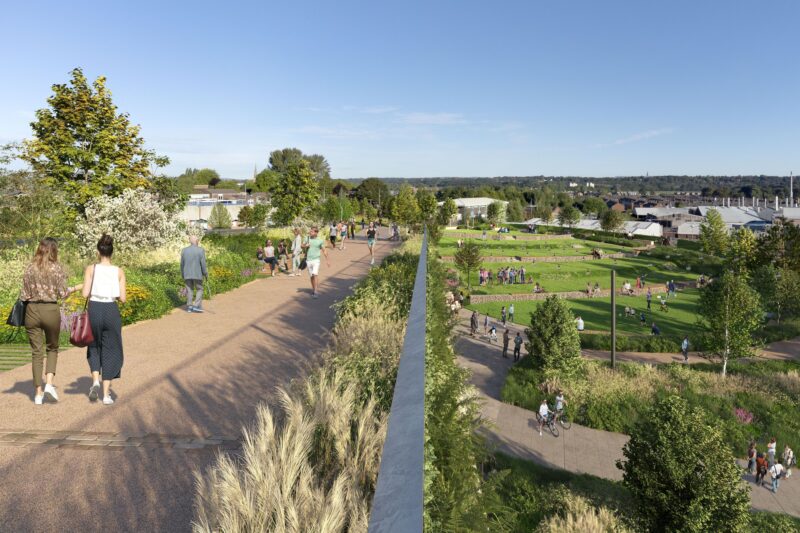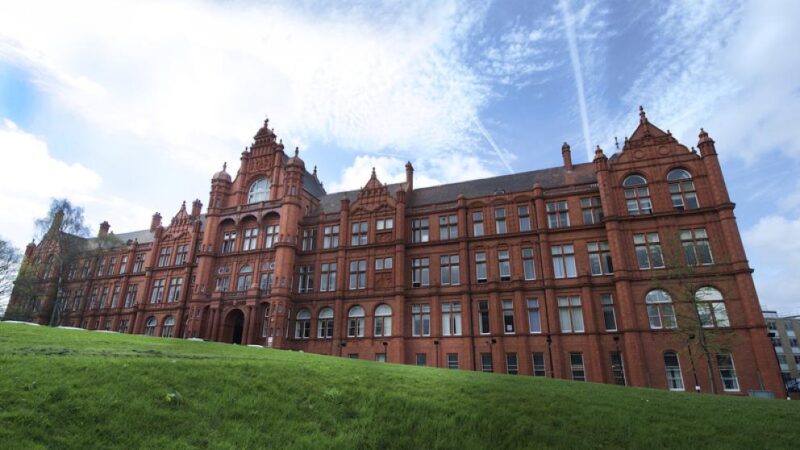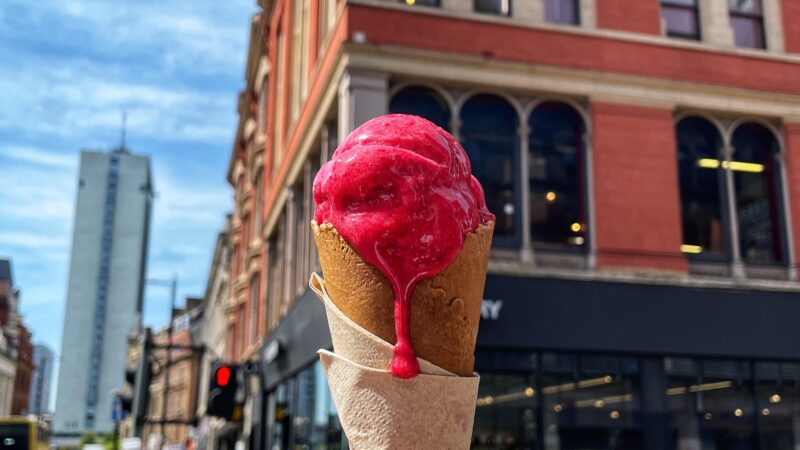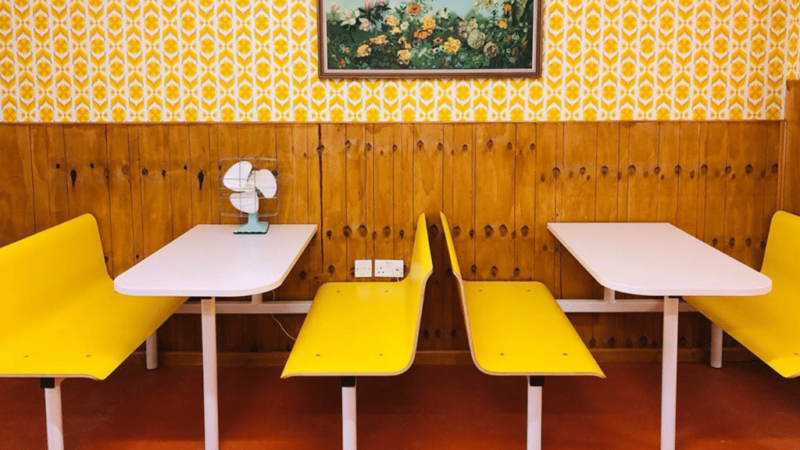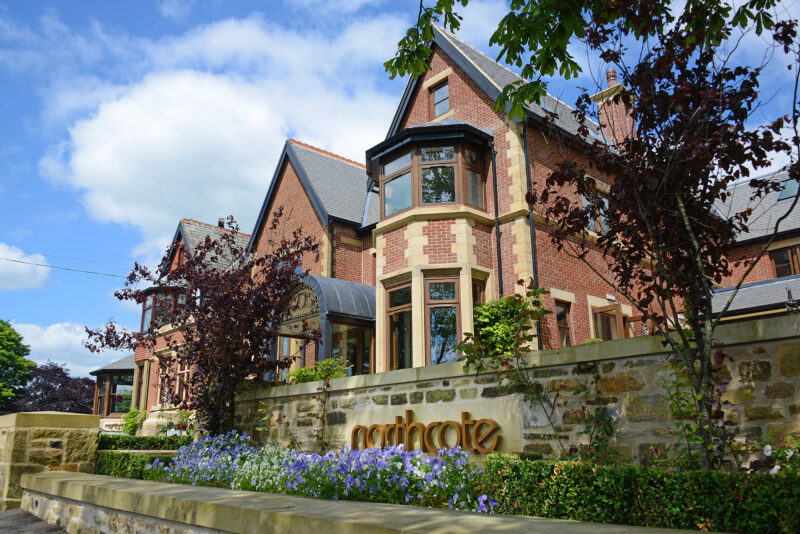Salford
The Greater Manchester Riots: 10 years on
This week marks a decade since hundreds were arrested in Greater Manchester after "unprecedented levels of violence and criminality" swept the region in summer 2011.
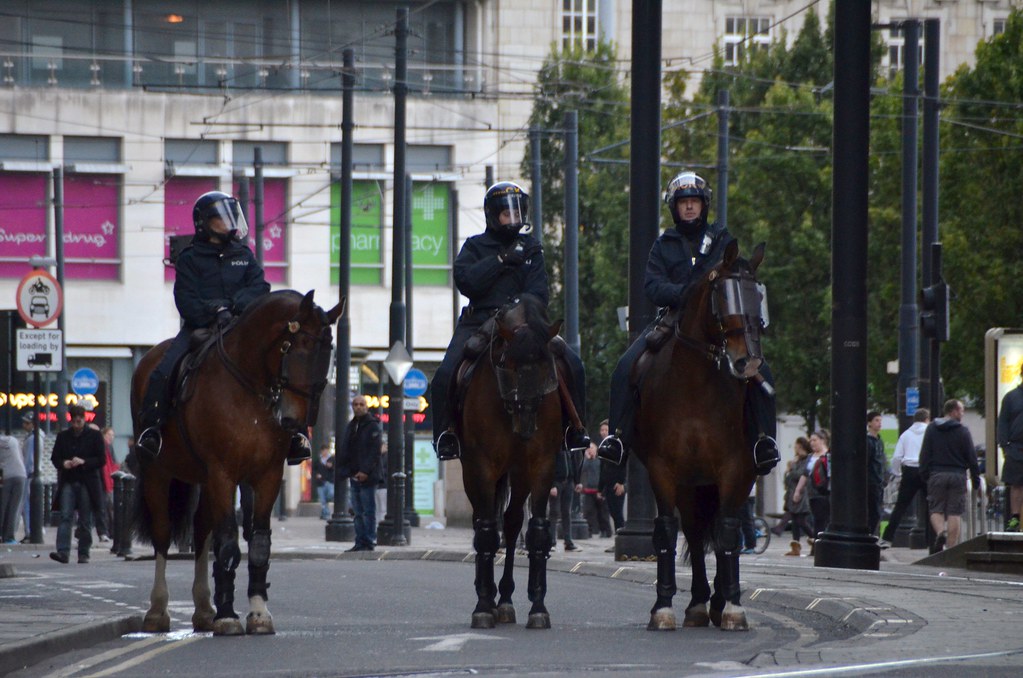
On the morning of 10 August 2011 – when the sirens had switched off, the flames had fizzled out, and the roars had been silenced – hundreds of Mancunians quietly got to work on repairing their shattered city.
Families, students and businesspeople arrived en masse to strap on gloves, grasp brooms and pick up paintbrushes, working together to shovel broken glass out of streets and reattach the frames to shop doorways.
The day before, Manchester and Salford had been swept up in the violence consuming England following the death of Mark Duggan – a 29-year-old who had been shot dead by police earlier in the summer of 2011.
A protest in Tottenham Hale had led to clashes with law enforcement, and the next few days saw trouble spread from the capital into other cities across the country.
The first pockets of local violence erupted in Salford Shopping Centre on the afternoon of August 9. Supermarket Lidl was the first target, before looters proceeded to break into a Bargain Booze and The Money Shop.
Police were pelted with missiles and journalists covering the story were even caught up in the melee; a BBC radio car battered with bricks before being set alight.
Within hours, Manchester city centre’s shops were also under attack – with officers overwhelmed by “unprecedented levels of violence and criminality”.
Mobs broke into Manchester’s Arndale Centre and groups stormed shops like Footasylum, Bang & Olufsen and Swarovski in St Ann’s Square.
Miss Selfridge on Market Street was also engulfed in flames as the outnumbered police desperately battled the masked-up mobs rampaging through the city streets.
The Guardian said it turned into “a tale of two riots” – with Greater Manchester Police’s then-chief constable Peter Fahy suggesting the respective culprits in Salford and Manchester had responded in different ways.
“Certainly most of [the rioting] in Manchester was about getting goods, breaking into places and stealing things,” Fahy told The Guardian.
“Salford I think was slightly different. It was more about attacking us and the fire services.”
The trouble in Greater Manchester dissipated the next day – but the region remained severely shaken.
More than 370 people were arrested, 60 officers were injured, and the total police cost was reportedly more than £3 million.
After the rioting ended elsewhere in England on August 11, it was revealed that more than 200 people had been injured and over 3,000 arrested nationwide. Five people were also killed during the six days of violence.
But according to local Councillor Pat Karney, Greater Manchester’s role in the riots was not reflective of what the region was about. He says it was those next few days – where adults and children were seen flocking to fix the damage – that showed the real GM.
“The true Mancunian spirit has been shown in Manchester today,” the councillor stated, as locals swept away debris and stuffed rubbish into sacks.
“The community has come out to say enough is enough, and that they will not stand by and let thugs try to destroy our city.
“This was pure criminal behaviour from a minority of people who were intent on looting and rioting and these criminals are not fit to be called Mancunians.”
Featured image: Richard Hopkins / Flickr
Salford
You can win tickets to sold-out Lewis Capaldi gigs at Greggs
 Thomas Melia
Thomas Melia

Nationwide bakery chain Greggs has partnered with singer-songwriter Lewis Capaldi for a chance to win tickets for his sold-out UK tour.
Now, if there’s one thing we love more than sausage rolls, it’s watching Glasgow solo star Lewis Capaldi perform his smash hit singles to crowds of roaring fans – and Glastonbury proved that.
The ‘Hold Me While You Wait’ singer recently announced his latest UK tour, and to no one’s surprise, it sold out within minutes, with extra dates added in each city.
Lewis Capaldi is now set to play two nights in Manchester at Co-op Live on Saturday and Sunday, 20-21 September, and now your only way in is to win.
Leave it to Greggs, one of the UK’s favourite savoury pick-me-up companies, and its new campaign with Capaldi, which offers lucky fans the chance to win tickets to one of these sold-out UK tour dates – How ‘Grace'(ful).
This new campaign, titled ‘Someone you look like?’ – inspired by the chart-topping anthem ‘Someone You Loved’ – encourages fans of the Scottish Beyoncé to dress up in an outrageous outfit inspired by one of Lewis’ many stylish looks.
Greggs and Lewis Capaldi are offering fans the chance to win tickets to his sellout tour across five of the bakery chain’s sites, including London, Birmingham, Sheffield, Glasgow and right here in Manchester.
The bond between Greggs and Capaldi isn’t new either, as the ‘Bruises’ penman worked a shift for the savoury suppliers back in 2019, having a blue plaque erected at this very Middlesbrough site professing his love for a tuna crunch butty.
This isn’t the only competition that UK bakery chain Greggs is currently running; it’s also teamed up with package holiday brand Jet2 to give away a holiday at the same price as their iconic sausage rolls.
Whilst you’re at it…
Greggs and Lewis Capaldi have 25 pairs of tickets to win per restaurant location and the nearest bakery spot running this promotion is the Salford site located at Media City, M50 2HF on Tuesday, 22 July 2025. All information can be found HERE.
Read more:
For all the latest news, events and goings on in Greater Manchester, subscribe to The Manc newsletter HERE.
Featured Images – Press shot/Rerrj (via Wikimedia Commons)
Salford
Streamer AngryGinge ‘arrested and banned’ from Silvestone at the British GP
 Danny Jones
Danny Jones
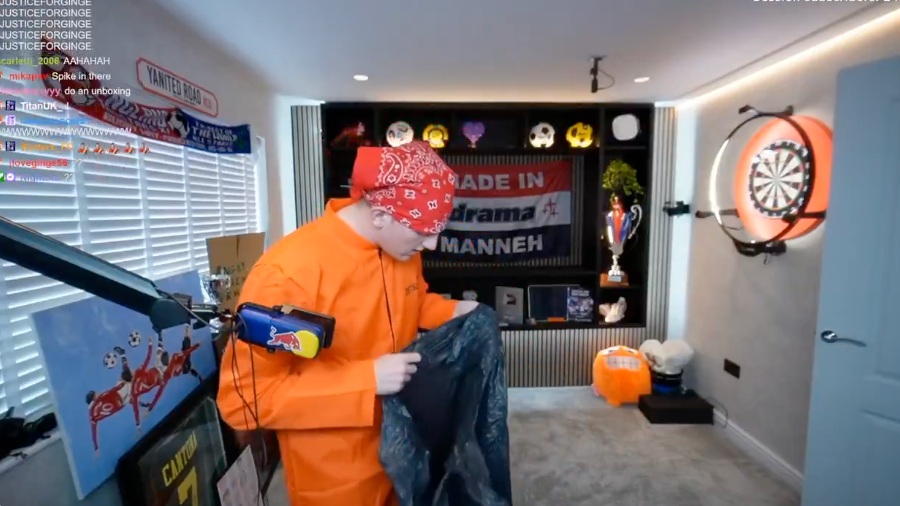
Popular Manc influencer, ‘AngryGinge’, was arrested, fined and ultimately banned from Silverstone at this year’s British GP.
The Salford-born Twitch streamer, YouTuber and social media personality (real name Morgan Burtwhistle) was detained at the circuit after being arrested on suspicion of criminal damage.
Ginge recently starred in Soccer Aid 2025 and is a well-known face both on the internet and in the sporting world, regularly working in and around football, and is an avid Manchester United – even featuring in the club’s third kit launch video last year.
The 23-year-old and two other fellow streamers, ‘Chazza’ and ‘Samham’, were accused of criminal damage after sitting in an F1 car whilst recording around the Silverstone complex.
According to reports, Ginge and his peers were alleged to have broken part of a display vehicle.
The local lad claimed they had been asked to pay £30,000 in compensation; national outlet talkSPORT has since confirmed the story with Northampton Police (NP) via an official statement.
“On Friday, July 4, NP received a report that a classic Formula 1 car on display at Silverstone Circuit during the British Grand Prix event had sustained several thousands of pounds worth of damage, which was alleged to have been caused by someone accessing the display stand and climbing into the vehicle.
“Officers carried out initial inquiries, and suspects were identified. Three men, aged 23, 25 and 27, were arrested on suspicion of causing criminal damage to a vehicle and taken into police custody.
“Following a thorough investigation into the circumstances of the incident, all three men were released with no further action.”
He and his friends have at least seen the funny side, sharing snaps from outside Northampton Justice Centre; Ginge even played ‘Locked Up’ by Akon as he walked out on stream in an orange jumpsuit.
Burtwhistle went into more detail on the incident on socials, explaining that the trio were taken away in handcuffs and “locked up” for several hours – 15 hours, according to SamHam (Samuel Imie).
All three individuals deny causing any damage to the racecar, even despite users sharing clips from the livestream footage captured for the Red Bull online Content on the day that many argue incriminates them, or at least sounds like it – we’ll let you watch and decide for yourselves.
Ginge himself went on to detail that ridculousness of the situation, explaining how he was effectively detained for watching someone else climb into the vehicle.
He’ll be dining out in this one for some time, you can be sure of that.
Read more:
For all the latest news, events and goings on in Greater Manchester, subscribe to The Manc newsletter HERE.
Featured Images — Soccer Aid/angryginge13 (screenshot via Twitch)/Samham (via X)




